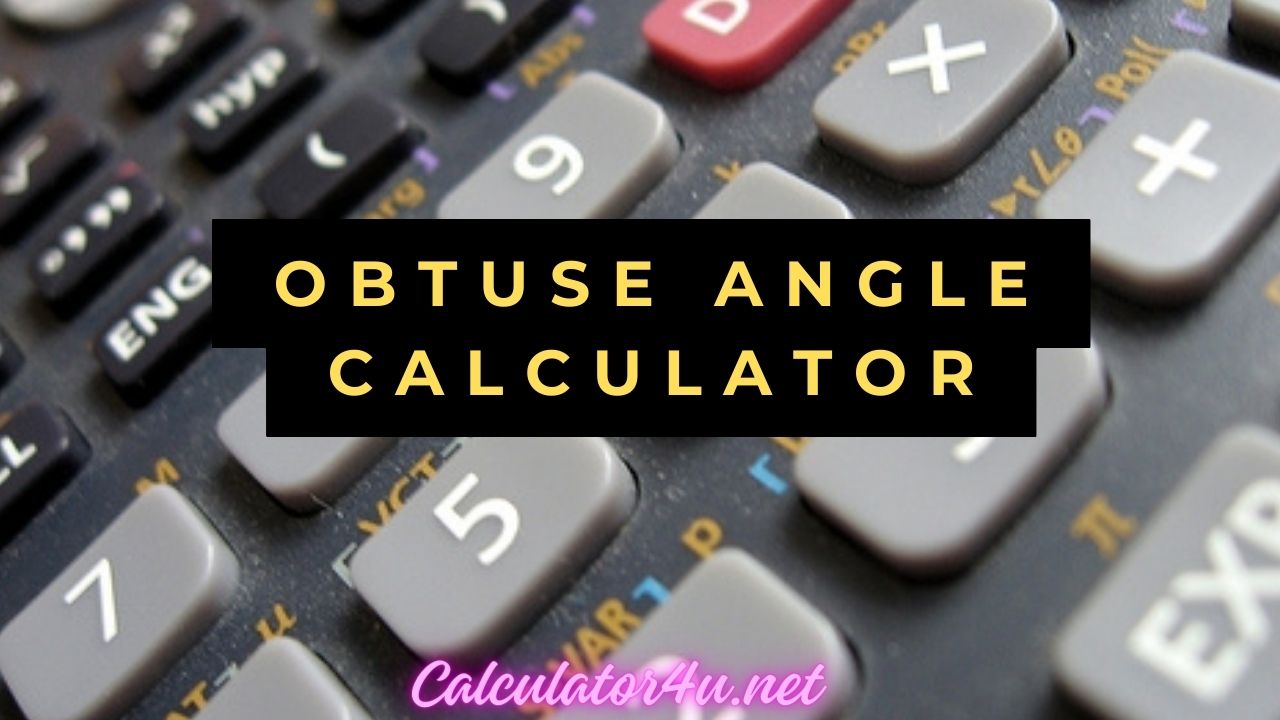Obtuse Angle Calculator
- Numerator And Denominator Calculator
- Normal Distribution Calculator
- Negative Exponents Calculator
- Natural Log Calculator
Obtuse Angle Calculator with Steps
Easily determine the measure of an obtuse angle using our calculator. Learn how to input values and interpret results accurately. Simplify your angle calculations now!
Table of Contents
Obtuse Angle Calculator
Welcome to our Obtuse Angle Calculator guide. Obtuse angles are angles that measure more than 90 degrees but less than 180 degrees. In this article, we'll explore how to use the Obtuse Angle Calculator to determine the measure of an obtuse angle efficiently.
Obtuse Angle Calculator Overview
Understanding Obtuse Angles
An obtuse angle is any angle that measures more than 90 degrees but less than 180 degrees. It is characterized by its openness, as it forms a wider angle than a right angle (90 degrees) but is not a straight angle (180 degrees).
Importance of Obtuse Angles
Obtuse angles are important in various fields, including:
- Geometry: Identifying and classifying angles in geometric shapes and figures.
- Engineering: Designing structures and mechanical components that involve angled surfaces.
- Navigation: Determining directions and bearings in mapping and navigation systems.
How the Calculator Works
Our Obtuse Angle Calculator provides a user-friendly interface for determining the measure of an obtuse angle. Simply input the angle's degree measure, and the calculator will determine whether it is obtuse or not.
Step-by-Step Guide to Using the Calculator
- Enter Angle Measure: Input the degree measure of the angle into the designated field.
- Compute Result: The calculator will analyze the input angle measure and determine whether it is obtuse or not.
- Review Output: Examine the result displayed by the calculator, indicating whether the angle is obtuse or not.
Practical Applications
Obtuse angles have practical applications in various scenarios, such as:
- Architecture: Designing buildings and structures with angled elements.
- Surveying: Measuring angles in land surveys and construction projects.
- Astronomy: Analyzing celestial objects and their positions relative to Earth.
Advantages of Using the Calculator
- Accuracy: Provides accurate determination of whether an angle is obtuse based on the input angle measure.
- Efficiency: Saves time and effort by automating the angle classification process.
- Versatility: Can handle a wide range of angle measures, accommodating diverse angle calculations.
FAQs
Q: What is the difference between an obtuse angle and an acute angle?
A: An obtuse angle measures more than 90 degrees but less than 180 degrees, while an acute angle measures less than 90 degrees.
Q: Can an angle be both obtuse and acute?
A: No, an angle cannot be both obtuse and acute simultaneously. It can only belong to one category based on its measure.
Q: What if I input a negative angle measure?
A: The calculator will treat negative angle measures as equivalent positive measures and determine whether they are obtuse accordingly.
Q: Are there real-life examples of obtuse angles?
A: Yes, examples of obtuse angles include the angles formed by the hands of a clock at certain times and the angles between the branches of a tree.
Q: Can the calculator handle angle measures in radians?
A: No, the calculator is specifically designed for degree measures of angles.
Conclusion
In conclusion, the Obtuse Angle Calculator offers a convenient and efficient solution for determining whether an angle is obtuse based on its degree measure. By following the steps outlined in this guide and utilizing the calculator's features, you can easily classify angles and apply them in various fields.

